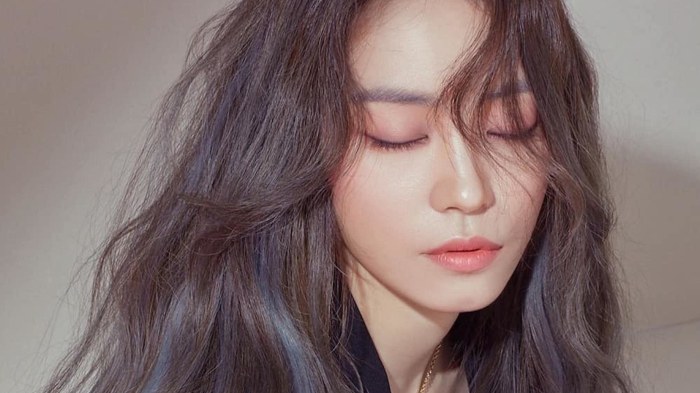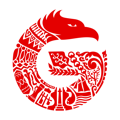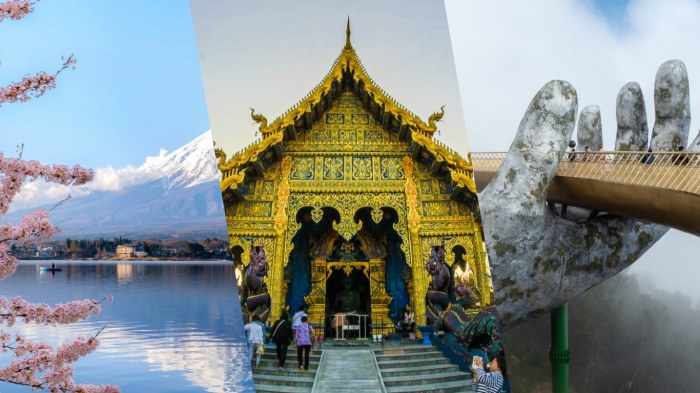Exploring the Allure of Asian Beauty Trends opens the door to a fascinating world where beauty transcends borders and cultures. From skincare innovations to makeup techniques, this topic delves into the captivating evolution of beauty trends originating from Asia.
As we delve deeper into the various facets of Asian beauty trends, readers will uncover the cultural significance and modern innovations that have reshaped the global beauty landscape.
Introduction to Asian Beauty Trends
Asian beauty trends have become a significant force in the global beauty industry, shaping consumer preferences and driving innovation. These trends are not just about cosmetics and skincare products but also reflect cultural influences and traditions that have captured the interest of beauty enthusiasts worldwide.
Cultural Influence Behind Asian Beauty Trends
Asian beauty trends are often influenced by centuries-old traditions and beliefs that prioritize skincare rituals, natural ingredients, and holistic approaches to beauty. Countries like South Korea, Japan, and China have a deep-rooted culture of skincare and beauty practices that emphasize prevention, maintenance, and self-care.
These cultural values have resonated with consumers looking for effective yet gentle beauty solutions.
Popular Asian Beauty Trends
- Korean Beauty (K-Beauty): Known for its multi-step skincare routines, innovative ingredients like snail mucin and sheet masks, K-Beauty has gained immense popularity globally.
- J-Beauty: Japanese beauty focuses on simplicity, quality ingredients, and a minimalist approach to skincare. Products like essence, sunscreen, and rice-based formulations have become staples in many beauty routines.
- Taiwanese Beauty: Taiwan is known for its emphasis on natural ingredients like pearl powder, and its innovative products such as 3D masks and beauty devices.
- Chinese Beauty: Traditional Chinese medicine influences many beauty products in China, with ingredients like ginseng, goji berries, and green tea being used for their skincare benefits.
Skincare Innovations in Asian Beauty
Asian beauty has long been admired for its innovative skincare routines that prioritize achieving healthy, glowing skin. These skincare practices often involve unique approaches that set them apart from Western beauty routines.
Natural Ingredients in Asian Skincare Products
Asian skincare products are known for their use of natural ingredients that have been used for centuries in traditional medicine and beauty practices. Ingredients like green tea, rice water, ginseng, and snail mucin are commonly found in Asian skincare products due to their proven benefits for the skin.
Comparison of Skincare Routines in Western vs. Asian Countries
- Western skincare routines typically focus on quick fixes and immediate results, often relying on harsh ingredients like retinol and chemical exfoliants. In contrast, Asian skincare routines prioritize long-term skin health and prevention, emphasizing gentle products and multiple steps in the skincare regimen.
- Asian beauty routines often involve multiple steps, sometimes up to 10 or more, including cleansing, toning, essence, serums, moisturizers, and sun protection. This meticulous approach ensures that each step serves a specific purpose in achieving radiant and healthy skin.
- Western countries tend to focus more on makeup to cover up skin imperfections, while Asian countries prioritize skincare to address the root causes of skin issues and achieve a natural, flawless complexion.
Makeup Techniques and Trends
Asian beauty trends have greatly influenced makeup techniques and trends around the world. Let's explore some popular techniques that have originated from Asia and how makeup trends have evolved over the years.
Popular Makeup Techniques in Asian Beauty Trends
- Gradient Lips: The gradient lip look, also known as "ombre lips," originated in Korea and Japan. This technique involves applying a darker shade of lipstick in the center of the lips and blending it outwards to create a soft, gradient effect.
- Dewy Skin: The dewy skin trend, popularized by Korean beauty brands, focuses on achieving a radiant and hydrated complexion. This involves using lightweight, luminous products to create a natural glow.
- Puppy Eye Makeup: This trend, inspired by K-pop idols, involves creating a cute and youthful appearance by slightly lifting the outer corners of the eyes to mimic a puppy-dog look.
Evolution of Makeup Trends in Asia
- In the past, Asian makeup trends were more focused on achieving a porcelain complexion with light coverage foundation and bright red lips.
- However, with the rise of K-beauty and J-beauty, there has been a shift towards more natural and youthful looks, emphasizing skincare and minimal makeup.
- Today, Asian makeup trends embrace diversity and individuality, with a focus on enhancing one's natural features rather than masking them.
Influence of K-beauty and J-beauty on Global Makeup Trends
- K-beauty and J-beauty have had a significant influence on global makeup trends, with many Western brands adopting Asian beauty techniques and products.
- From cushion foundations to sheet masks, the innovations from Korea and Japan have revolutionized the beauty industry worldwide.
- The emphasis on skincare-first approach and natural-looking makeup has resonated with consumers globally, leading to a more inclusive and diverse beauty landscape.
Haircare Practices in Asian Beauty
Asian cultures have a rich history of traditional haircare practices that have been passed down through generations
Let's explore the fascinating world of Asian haircare routines.
Traditional Haircare Practices in Asian Cultures
- Oil Massage: In many Asian cultures, oil massages are a common practice to nourish the scalp and promote hair growth. Oils such as coconut, almond, and sesame are often used for their moisturizing and conditioning properties.
- Herbal Treatments: Herbal remedies like hibiscus, amla, and shikakai are frequently used in Asian haircare routines to strengthen hair, prevent breakage, and add shine.
- Rinsing with Rice Water: Fermented rice water is a traditional Asian beauty secret known for its ability to improve hair texture, stimulate growth, and add a natural shine.
Modern Haircare Trends and Innovations in Asian Beauty
- K-Beauty Hair Products: Inspired by the success of Korean skincare, K-beauty hair products have gained popularity for their innovative formulas and trendy packaging. Products like hair essences, serums, and masks are designed to address specific hair concerns.
- Scalp Care: Asian beauty brands have put a strong emphasis on scalp health, offering a wide range of scalp treatments and exfoliators to maintain a clean and healthy scalp environment.
- Multi-step Haircare Routines: Similar to the multi-step skincare routine, Asian beauty enthusiasts have adopted elaborate haircare routines that involve pre-shampoo treatments, conditioners, masks, and styling products for optimal hair health.
Use of Hair Oils and Treatments in Asian Haircare Routines
- Hair Oils: Argan oil, camellia oil, and jojoba oil are popular choices in Asian haircare for their moisturizing and nourishing properties. These oils are often used to treat dry, damaged hair and add shine.
- Hair Masks: Asian hair masks are known for their intensive treatment formulas that target specific hair concerns such as frizz, damage, or lack of volume. Ingredients like keratin, collagen, and silk proteins are commonly used in these masks.
- Leave-in Treatments: Leave-in conditioners, serums, and oils are essential in Asian haircare routines to provide continuous hydration, protection, and repair throughout the day.
Influence of Social Media and Celebrities
Social media platforms have played a significant role in amplifying the reach of Asian beauty trends. With the rise of platforms like Instagram, TikTok, and YouTube, beauty enthusiasts from around the world can easily access and adopt popular Asian skincare routines, makeup techniques, and haircare practices.
The instantaneous sharing of beauty tips, tutorials, and product recommendations has led to a global exchange of beauty trends, with Asian beauty at the forefront of innovation and inspiration.
Role of Asian Celebrities in Popularizing Beauty Trends
Asian celebrities have been instrumental in popularizing beauty trends globally. With their influence and large following on social media platforms, Asian celebrities often set the standard for beauty and fashion trends. From flawless skin to bold makeup looks, Asian celebrities showcase a diverse range of beauty styles that captivate audiences worldwide.
Their endorsement of specific products or techniques can lead to widespread adoption and influence beauty standards on a global scale.
Impact of Beauty Influencers from Asian Countries
Beauty influencers from Asian countries have become powerful figures in shaping beauty standards and trends. These influencers not only share their personal beauty routines and tips but also collaborate with beauty brands to create innovative products tailored to their audience's needs.
By promoting cultural beauty practices and incorporating modern techniques, Asian beauty influencers bridge the gap between traditional beauty rituals and contemporary trends. Their authenticity and expertise have established them as trusted voices in the beauty industry, influencing consumers and brands alike.
Concluding Remarks

In conclusion, Exploring the Allure of Asian Beauty Trends unravels a tapestry of beauty traditions and contemporary influences that continue to captivate beauty enthusiasts worldwide. Embrace the allure of Asian beauty trends and embark on a journey of discovery in the ever-evolving realm of beauty.
FAQ Corner
How do Asian beauty trends differ from Western beauty trends?
Asian beauty trends often focus on achieving a natural, radiant complexion through skincare, whereas Western beauty trends may emphasize bold makeup looks.
What are some popular Asian beauty trends that have gained global recognition?
Examples include sheet masks, double cleansing, and glass skin, all of which have become popular worldwide.
How have social media platforms impacted the popularity of Asian beauty trends?
Social media has played a significant role in amplifying the reach of Asian beauty trends, allowing them to gain widespread popularity and influence globally.









